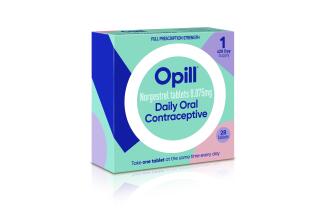Female Condom Wins Support of FDA Panel
- Share via
WASHINGTON — A federal advisory panel recommended approval Friday of a condom designed for women--a device that for the first time will allow women to protect themselves from sexually transmitted diseases in the deadly age of AIDS.
If the condom gets final approval by the Food and Drug Administration, a woman will no longer “have to negotiate with a man or be dependent on a man . . . for protecting her,” said Dr. Mervyn F. Silverman, president of the American Foundation for AIDS Research, who has served as a consultant to the manufacturer.
The recommendation by the Food and Drug Administration’s Obstetrics and Gynecology Devices panel was conditional, depending on the results of additional studies of the condom’s effectiveness in preventing pregnancy. So far, such studies have been conducted only on small groups.
Although the FDA still must approve the condom before it can be sold, advisory panel recommendations typically wield considerable influence in agency decision-making.
The condom, manufactured by Wisconsin Pharmacal Co. of Jackson, Wis., and Chicago, already has been approved in Switzerland and is expected to be marketed soon in France and Britain.
It has been enthusiastically endorsed by numerous international family planning organizations, women’s health organizations and AIDS groups. The U.S. Agency for International Development contributed an estimated $1.5 million to $2 million to support clinical trials of the device.
“For the American consumer, it offers women a new option they didn’t have before,” said James Shelton, chief of the research division of Agency for International Development’s office of population.
“Overseas, AIDS is even more of a heterosexually transmitted disease than it is here--and women are even less empowered there than they are in the United States,” Shelton said. “So anything at all that will help them in this regard is important.”
Mary Ann Leeper, head of the company’s development team, said the firm already had begun an expanded study and predicted the research would be finished by June or July.
If agency approval came soon after, “we could have the product on the shelves, hopefully, by late fall, and certainly by the end of the year,” she said.
The results of one study, conducted on 81 women over six months, were extrapolated to show a rate of 15 pregnancies per 100 women--15%--in one year.
Company officials, however, attributed the pregnancies to “user failure, not method failure,” meaning that the woman did not use the condom.
The same study showed no instances of sexually transmitted diseases among the women, the company said.
The study thus far indicates that the pregnancy rate with the female condom is similar to that of other contraceptive barrier devices.
The diaphragm and cervical cap, for example, have a failure rate of 18%, while the male condom has a failure rate of 12%, according to Contraceptive Technology. The cervical cap and diaphragm, however, offer no protection against sexually transmitted diseases.
The panel said the FDA should approve the device if studies on 200 women show the same rates, or better, as the research to date. The panel also asked for additional data on breakage and on refinements in the company’s proposed labeling for the device.
The condom’s biggest drawback is expected to be its price. One female condom, for a onetime use, is expected to cost about $2.25, compared to about 70 cents for a condom used by a man. The company estimates that an average year’s supply would cost about $180-$190, compared to about $200 or more for birth control pills.
Leeper said, however, that the company planned to provide bulk sales discounts to U.S. clinics and to the Agency for International Development for overseas distribution. But she said she could not yet estimate the lowered price.
The advisory panel’s unanimous vote followed a day of emotional testimony from representatives of women’s and AIDS groups who pleaded with the panel to recommend approval.
“There are women with no alternatives . . . (who) get beaten up,” when they ask their partners to wear condoms, said Sheryl B. Ruzek, of Temple University, a non-voting member of the panel who urged her colleagues to support the device. “It’s true that there are some men who won’t like this either. But let’s make the playing field level.”
Silverman told panel members that while the condom was “not a perfect device,” it would “be tragic not to approve something that will give some protection” against disease to women who now use nothing.
The condom, which will be sold under the name Reality, consists of a loose-fitting lubricated polyurethane sheath and two flexible polyurethane rings. It can be used with additional lubricant, but does not require a spermicide, the company said.
One of the rings lies inside at the closed end of the sheath and serves as an insertion mechanism and internal anchor. The other ring forms the external edge of the sheath and remains outside the vagina after it is inserted.
Once in place, the device covers the entire internal vaginal wall and the labia during intercourse.
While studies showed the device occasionally slips, it “always came off on the penis, so there is never any skin-to-skin contact,” Leeper said.
Female Condom
The female condom will be the first contraceptive that will give women control over protecting themselves from sexually transmitted diseases. It will be on the market in Switzerland early this month, and in France and Britain later this year. The condom’s major drawback is its price. The device, usable only one time, is expected to cost between $2 and $3. Source: Wisconsin Phamacal.






